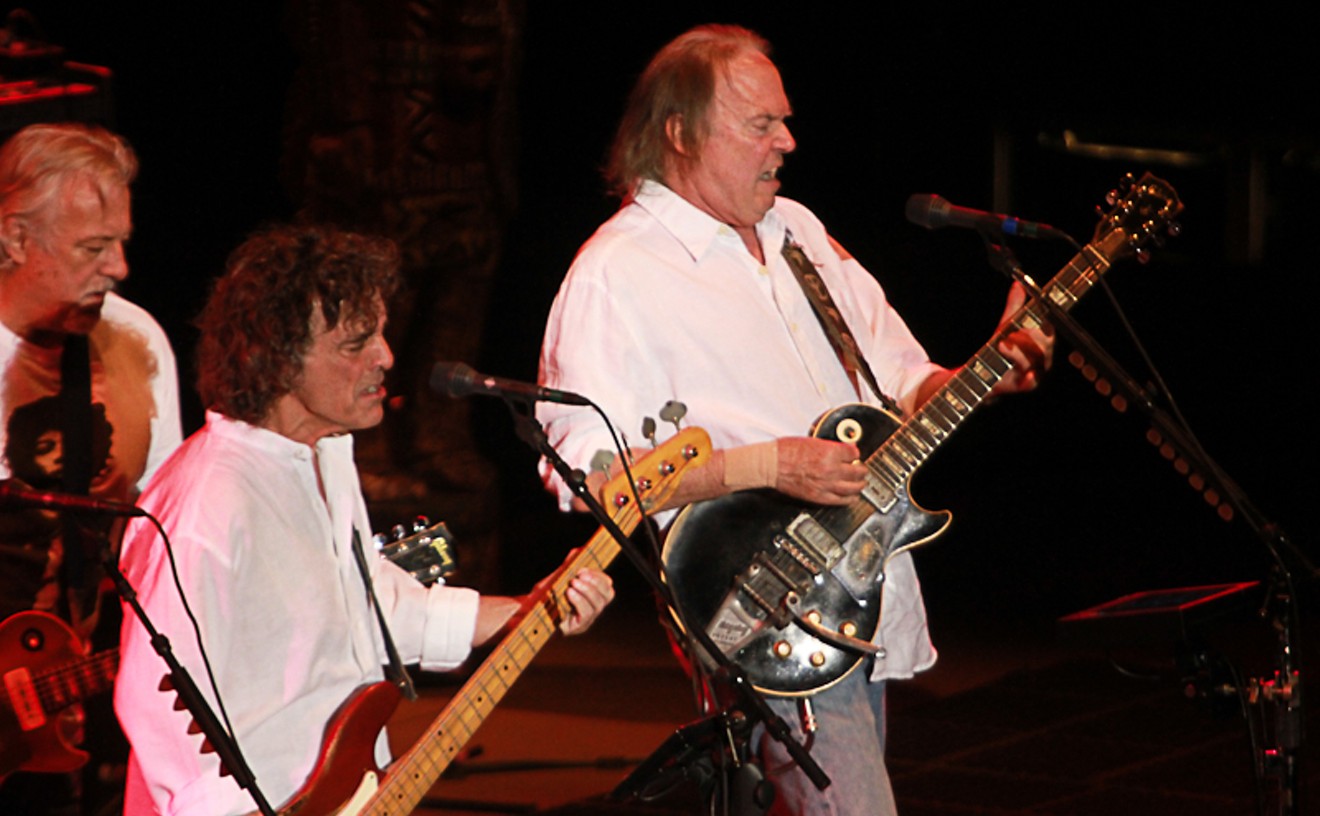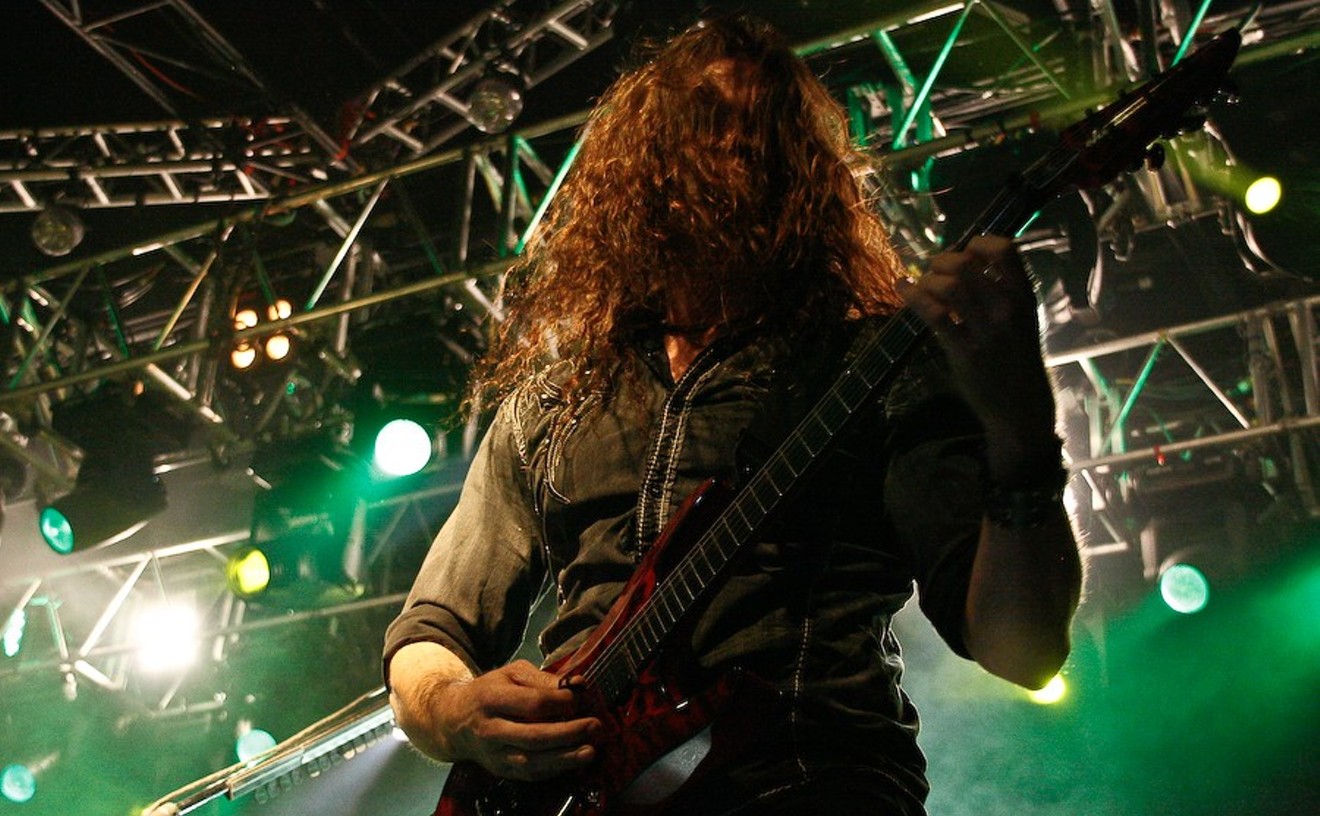"I really try to make everything as hyper as possible," admits Jenny Hoyston, singer and trumpeter of the San Francisco band Erase Errata. The quartet -- rounded out by guitarist Sara Jaffe, bassist Ellie Erickson and drummer Bianca Sparta -- has been riling nerves and inducing spasms since its inception in 1999, releasing two full-length discs and touring with the luminous likes of Sonic Youth and Le Tigre. And though it's somewhat tethered to a punk-rock and riot-grrrl zeitgeist, the music of Erase Errata is relentlessly probing. The political is made manifest in the song structures themselves: free, defiant, aesthetically egalitarian compositions that resemble vintage avant-garde more than they do any kind of modern-day indie rock.
"The only explanation for that I can think of is that it's some kind of gender thing," Hoyston remarks over all the comparisons of Erase Errata to more conventional, all-female outfits like Portland's popular Sleater-Kinney. "I cannot, for the life of me, hear any similarities between those bands and us. Not that it's an insult or anything to be compared to them; it's just that that stuff is much more indie rock than us. We're too crusty; they're too Gap.
"Personally," she goes on, "I come from a background of listening to weird experimental music and jazz. I've been playing the trumpet since grade school, and I totally love Ornette Coleman and Miles Davis and John Coltrane. And Captain Beefheart -- I think that we have an approach to making music kind of like his Magic Band, where we're each playing totally different things at the same time. There's no one saying, 'Here are the chords; here is the bass line that goes along with them.' All our songs start out as improvisations. I think that spirit is very akin to the avant-garde stuff I listen to, that feeling of independence, where everybody's doing their own thing yet trying to keep the song together."
Erase Errata's vision of order within anarchy is apparent in the progression from the band's 2001 debut, Other Animals, to the newly released At Crystal Palace. The first record -- as scathing, unearthly and beautiful as it is -- has spots of wooden flatness where ideas are given neither the room nor the time to fully flourish. Palace, on the other hand, bursts at the seams with synergy and dimension.
"We recorded that whole first album in two and a half days," says Hoyston. "We didn't really have any idea then that so many people would end up hearing it. We had more time to spend on the new one, though, and I think it wound up being more adventurous. There are more twists and turns that we put into the songs, more abstraction." Palace is a sleek-yet-skittish contraption of broken tempos and bent guitars knotted together with a torque-wound syncopation. Fidgety, logic-defying runs are stitched over each other in sinuous zigzags. Nail-chewed anxiety underlies cool dispassion. It's like the four players share one nervous system: one very nervous system.
What makes Hoyston and company even more nervous, though, is how their music has been mislabeled over the last couple of years. With the recent ascendance of sassy, dance-punk bands like the Rapture and Radio 4, Erase Errata has constantly been lumped in with a relatively shallow -- and mostly Gotham-based -- '80s-throwback movement that it wants no part of.
"I'd never even heard of a lot of these bands until people started comparing us to them in every article," Hoyston vents "Maybe I'm just burned-out, but all that stuff that's gotten so big lately, I can't stand it. When all the pretty people in New York get involved in something, it usually turns bad."
But as much as Erase Errata may want to distance itself from New York's retro-hipster contingent, there's no denying the similarities between the band's jerky, fissured sound and the spasmodic attack of the late-'70s/early-'80s post-punk era that everyone east of the Hudson River is ripping off nowadays. Echoes of revered, girl-fronted cult groups like Lilliput, Pylon, the Slits, Lydia Lunch's Teenage Jesus and the Jerks can be heard in Erase Errata's funky, double-jointed, oddly danceable dissonance.
"I'd never even heard of a lot of these bands until people started comparing us to them in every article," Hoyston reiterates. "It might just be that we were influenced by some of the same things that influenced all those bands in the late '70s or whenever. I don't really listen to any of that dance-y stuff that people think is supposed to sound like us; I try not to listen to anything with any kind of disco beat or anything like that."
Still, this aversion to dance rhythms didn't stop Erase Errata from releasing a twelve-inch of mirror-ball-friendly remixes earlier this year. With tracks by underground electronic artists like Kid 606, Matmos, Kevin Blechdom and Adult, the disc confirms what Erase Errata concert-goers have known all along: The group's music can have a wrenching effect on your pelvis.
"Yeah, people go crazy dancing when we play," Hoyston concedes. "Sometimes it's just bobbing, depending on the crowd, and sometimes it's total crowd-surfing. You can't help it; at our shows, something just kind of takes over."
Indeed, her lyrics to the song "Dexterity Is #2" read like a veritable get-down manifesto -- or at least the storyboard to a Michael Jackson video: "Mirror footprints on the floor/Follow those steps as they light up/Dexterity is part of being a good citizen/Dance, U.S.A., dance!"
"Most of the songs we play live are our kind of dance songs," says Hoyston, "the songs that get people really hyped up. It makes things a lot more interactive and thrilling. And it makes me, as a performer, feel a part of something as opposed to just being the television for these people tonight." (Coincidentally, one of the songs on Other Animals is titled "How to Tell Yourself From a Television.") "Sometimes people just sit there and watch you like they watch a movie. I like when they get excited about what's going on. I would hope that people go away with some kind of extra energy or physical empowerment from having jumped around and had fun."
But Hoyston has a more personal, even selfish reason for inciting fans to party on the dance floor at Erase Errata shows. "I really appreciate it when people are going nuts," she confesses with a laugh. "That means they're not just standing there and making me nervous."










